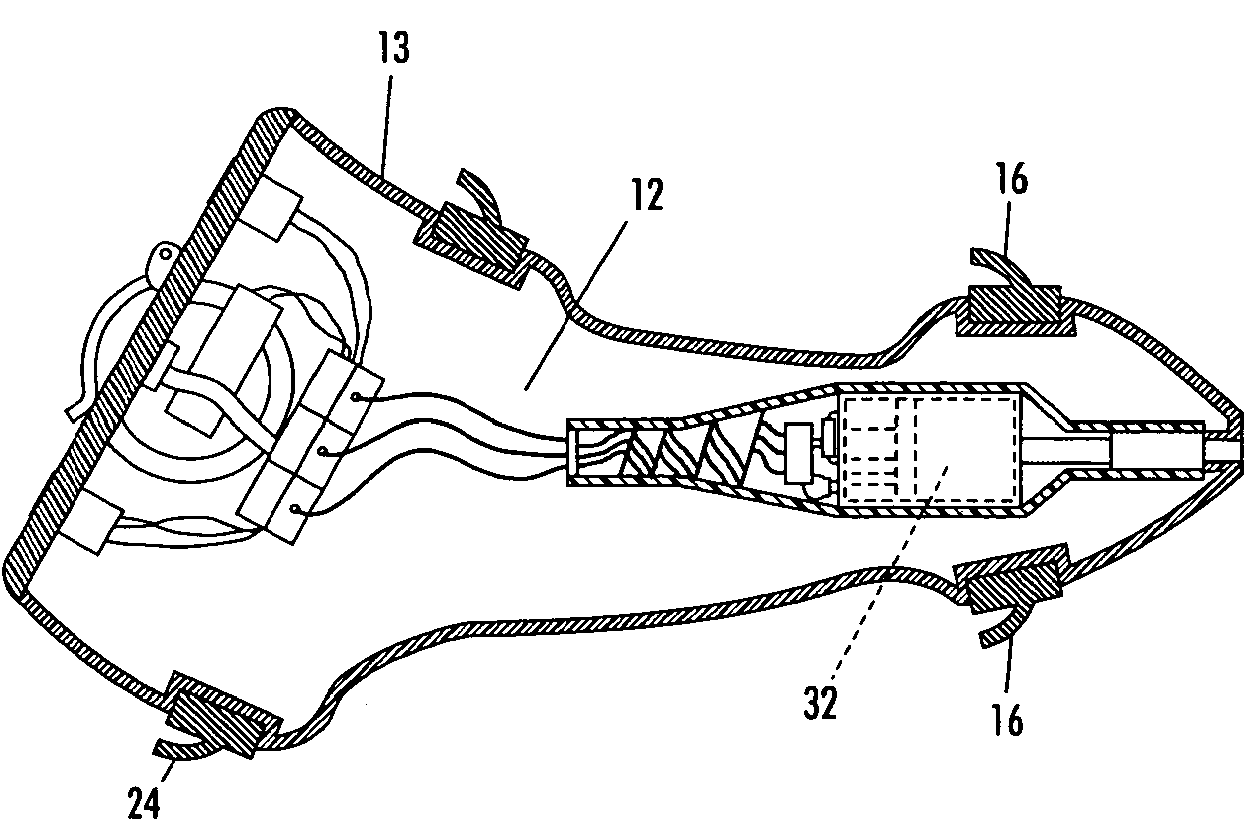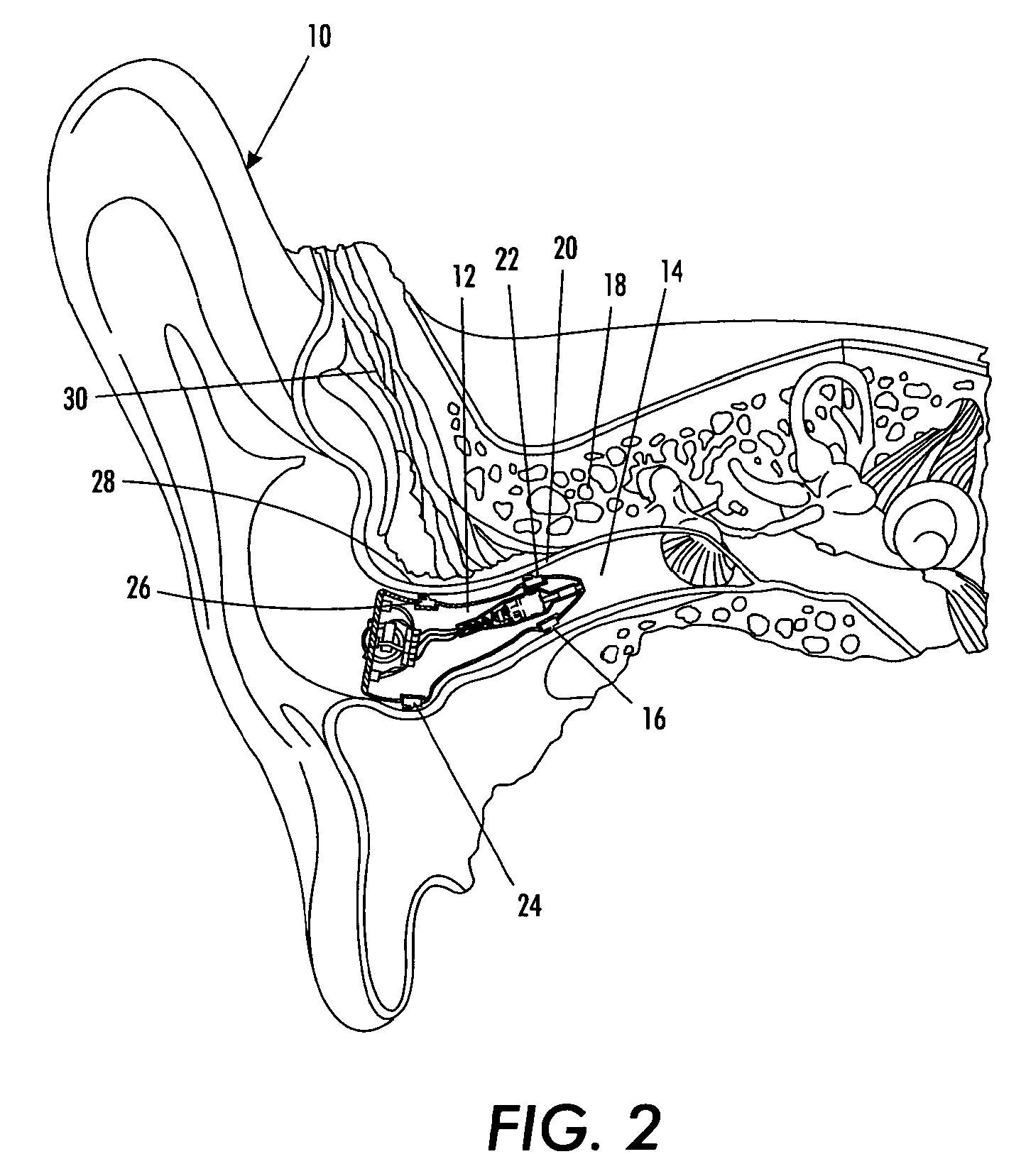In the ear hearing aid utilizing annular acoustic seals
a technology of annular acoustic seals and hearing aids, which is applied in the direction of ear supports, ear moulds/tips acoustic seals, and completely in canal hearing aids. it can solve the problems of unwanted acoustic feedback, custom molded ear worn hearing instruments that have not been fully realized, and achieve the effect of improving the performance and reliability of hard shell acrylic ester copolymer
- Summary
- Abstract
- Description
- Claims
- Application Information
AI Technical Summary
Benefits of technology
Problems solved by technology
Method used
Image
Examples
Embodiment Construction
[0051]FIG. 1 is a sectional view of an ear 10 of a human being. This sectional view of the ear 10 is taken from “The Anatomy Chart Series,” Classic Library Edition, ISBN 0-9603730-4-7, Lb. Cat No. 86-071078, Page 21. In the embodiment depicted, the ear 10 is a right ear.
[0052]Reference also may be had, e.g. FIG. 1 of U.S. Pat. No. 6,228,020, which is “. . . a sectional elevational view of a user's hearing area to show the anatomy thereof.” The entire disclosure of such United States patent is hereby incorporated by reference into this specification.
[0053]FIG. 2 is a sectional view of the ear 10 with a hearing aid assembly 12 disposed within the ear canal channel 14. The hearing aid assembly 12 is comprised of a first seal 16 that is disposed just prior to the bony portion 18 of the ear. In the embodiment depicted, the bony portion 18 starts at point 20. The distance between the end 22 of the first seal 16 and the point 20 is preferably no greater than about 2 millimeters and, more p...
PUM
 Login to View More
Login to View More Abstract
Description
Claims
Application Information
 Login to View More
Login to View More - R&D
- Intellectual Property
- Life Sciences
- Materials
- Tech Scout
- Unparalleled Data Quality
- Higher Quality Content
- 60% Fewer Hallucinations
Browse by: Latest US Patents, China's latest patents, Technical Efficacy Thesaurus, Application Domain, Technology Topic, Popular Technical Reports.
© 2025 PatSnap. All rights reserved.Legal|Privacy policy|Modern Slavery Act Transparency Statement|Sitemap|About US| Contact US: help@patsnap.com



